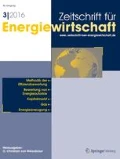Zusammenfassung
Der globale Energieverbrauch steigt weiter an. Der Zuwachs des Energieverbrauchs wird mittlerweile von erneuerbaren Energien und fossilen Energierohstoffen zu ähnlichen Anteilen getragen, aber Erdöl, Erdgas und Kohle bilden weiterhin das Rückgrat der Energieversorgung. Die Abhängigkeit der Energieversorgung von fossilen Energierohstoffen wird daher noch für absehbare Zeit fortbestehen. Auch für Deutschland ist trotz der hohen Wachstumsraten bei den Erneuerbaren, begleitet von einer Abnahme der Eigenförderung und dem Ausstieg aus der Kernenergie eine Minderung der hohen Importabhängigkeit bei den fossilen Energierohstoffen nicht absehbar. Derzeit leisten Erdöl, Erdgas, Stein- und Braunkohle nach wie vor mit rund 80 % den mit Abstand größten Beitrag zur Deckung des deutschen und globalen Primärenergieverbrauchs.
Alle erneuerbaren Energien zusammengenommen tragen rund 17 % zur Deckung des globalen Energieverbrauchs bei. Die bedarfsgerechte und umfängliche Verfügbarkeit der Energieerzeugung aus erneuerbaren Quellen steht damit trotz des nahezu unerschöpflichen Potenzials noch am Anfang. Im Gegensatz dazu sind sehr große fossile Energierohstoffvorkommen bereits seit vielen Jahren erschlossen und werden in weiter steigendem Mengen genutzt. Der weltweite Vergleich von bislang bereits geförderten und damit verbrauchten Energierohstoffen mit noch vorhandenen Reserven und Ressourcen zeigt, dass in allen Regionen der Erde noch große, nicht ausgeschöpfte Energiepotenziale existieren. Während in den Regionen Austral-Asien, GUS und Nordamerika die Potenziale kaum berührt erscheinen, ist selbst in Europa bis heute nur ein kleiner Teil gefördert worden. Der Rohstoffreichtum wird dabei primär durch die großen Kohlevorkommen erreicht, die es auf allen Kontinenten gibt und die nicht, wie beim konventionellen Erdöl und Erdgas, auf einige Regionen begrenzt sind. Die für Erdöl und Erdgas so bedeutende Region des Nahen Ostens verfügt aufgrund der geringen Kohlenvorräte nur über ein vergleichsweise geringes Gesamtpotenzial.
Abstract
Global energy consumption is growing. The growth in energy consumption is now covered roughly equally by renewable energy resources and fossil energy resources. Nevertheless, crude oil, natural gas and coal continue to form the backbone of energy supplies. This means that the dependency of energy supplies on fossil energy resources will continue for the foreseeable future. In Germany as well, there is no end in sight of the country decreasing its high dependency on imports of fossil energy resources despite the high growth rate of renewables—and due in part to the decline in domestic production and the withdrawal from nuclear power generation. Crude oil, natural gas, hard coal and lignite with a share of around 80%, still make the largest contribution to the German and global primary energy consumption.
All of the renewables together cover around 17% of global energy consumption. Despite the almost inexhaustible potential, making energy generation from renewable sources available at a large scale and commensurate with demand is still in its infancy. By way of contrast, very large reserves of fossil energy resources have already been developed for many years, and are being used in growing quantities. The global comparison of already produced and therefore consumed energy resources and the still existing reserves and resources, reveal that large non-depleted energy potential still exists in all regions around the world. Whilst the potential hardly appears to be touched in Austral-Asia, in the CIS and North America, only a small portion has been produced to date even in Europe. This wealth in resources is primarily attributable to the large deposits of coal found on all continents, which, unlike conventional crude oil and natural gas, are not restricted to a few special regions. Although the Middle East is an extremely important region for crude oil and natural gas, the minor coal reserves in the area mean that its overall potential is comparatively small.












Notes
Im Juni 2017 gab der Präsident der USA Donald Trump den Ausstieg aus dem Pariser Klimaabkommen bekannt. Wirksam werden soll der Rückzug der USA allerdings erst im Jahr 2020.
Literatur
BAFA (2017) Drittlandskohlepreis, Mengen- und Preisübersicht. http://www.bafa.de/DE/Energie/Rohstoffe/Drittlandskohlepreis/drittlandskohlepreis_node.html. Zugegriffen: 20.06.2018
BGR (2016) Energiestudie 2016. Reserven, Ressourcen und Verfügbarkeit von Energierohstoffen. https://www.bgr.bund.de/DE/Themen/Energie/Downloads/Energiestudie_2016.pdf;jsessionid=68E66D033BB6E4A28392067DC65794F1.1_cid292?__blob=publicationFile&v=3. Zugegriffen: 20.06.2018
BGR (2017) BGR Energiestudie 2017 – Daten und Entwicklungen der deutschen und globalen Energieversorgung. http://www.bgr.bund.de/energiestudie2017.de. Zugegriffen: 20.06.2018
BP (2017) Statistical review of world energy. https://www.bp.com/content/dam/bp/en/corporate/pdf/energy-economics/statistical-review-2017/bp-statistical-review-of-world-energy-2017-full-report.pdf. Zugegriffen: 20.06.2018
EGEC (2017) Geothermal market report 2016. Key findings. https://www.egec.org/wp-content/uploads/2017/05/EGEC-Geothermal-Market-Report_KF_final_web.pdf. Zugegriffen: 20.06.2018
IAEA (2016) Asia’s prospects for nuclear power higlighted at regional conference (30.08.–01.09.2016). https://www.iaea.org/newscenter/news/asias-prospects-for-nuclear-power-highlighted-at-regional-conference. Zugegriffen: 20.06.2018
IAEA (2017) Energy, electricity and nuclear power estimates for the period up to 2050, 2017 edition. http://www-pub.iaea.org/MTCD/Publications/PDF/17-28911_RDS-1%202017_web.pdf. Zugegriffen: 20.06.2018
IEA (2016) World energy outlook 2016. https://www.iea.org/media/publications/weo/WEO2016Chapter1.pdf. Zugegriffen: 20.06.2018
IEA (2017a) World energy outlook 2017. http://www.iea.org/media/weowebsite/2017/Chap1_WEO2017.pdf. Zugegriffen: 20.06.2018
IEA (2017b) Electricity information 2017. https://webstore.iea.org/electricity-information. Zugegriffen: 20.06.2018
IEA (2017c) Southeast asia energy outlook 2017. World energy outlook special report. http://www.indiaenvironmentportal.org.in/files/file/Southeast%20Asia%20Energy%20Outlook.PDF. Zugegriffen: 20.06.2018
IPCC (2006) 2006 IPCC guidelines for national greenhouse gas inventories, prepared by the national greenhouse gas inventories programme. https://www.ipcc-nggip.iges.or.jp/public/2006gl/vol2.html. Zugegriffen: 20.06.2018
IRENA (2017) Renewable capacity statistics 2017. http://www.irena.org/-/media/Files/IRENA/Agency/Publication/2017/Mar/IRENA_RE_Capacity_Statistics_2017.pdf. Zugegriffen: 20.06.2018
Markit IHS (2017) McCloskey coal report. https://www.ihs.com/products/global-coal-news-analysis.html. Zugegriffen: 20.06.2018
OECD-NEA/IAEA (2016) Uranium 2016: resources, production and demand, NEA no. 7301. http://www.oecd.org/publications/uranium-20725310.htm. Zugegriffen: 20.06.2018
REN21 (2017) Renewables 2017 global status report. http://www.ren21.net/status-of-renewables/global-status-report/. Zugegriffen: 20.06.2018
UNFCCC (2015) Paris agreement. http://unfccc.int/files/essential_background/convention/application/pdf/english_paris_agreement.pdf. Zugegriffen: 20.06.2018
UNFCCC (2016) Status of ratification of the convention. http://unfccc.int/essential_background/convention/status_of_ratification/items/2631.php. Zugegriffen: 20.06.2018
VDKI (2017) Marktinformationen/Steinkohlenpreise, Wechselkurse. http://www.kohlenimporteure.de/marktinformationen.html. Zugegriffen: 20.06.2018
Wahjosoedibjo AS, Hasan M (2018) Indonesia’s geothermal development: where is it going? https://pangea.stanford.edu/ERE/db/GeoConf/papers/SGW/2018/Hasan.pdf. Zugegriffen: 20.06.2018
WNN (2017) Korea’s nuclear phase-out policy takes shape. http://www.world-nuclear-news.org/NP-Koreas-nuclear-phase-out-policy-takes-shape-1906174.html. Zugegriffen: 20.06.2018
Wood Mackenzie (2017) Oil finds at lowest since 1952. https://www.bloomberg.com/news/articles/2017-01-10/oil-discoveries-seen-recovering-after-crashing-to-65-year-low. Zugegriffen: 20.06.2018
Author information
Authors and Affiliations
Corresponding author
Rights and permissions
About this article
Cite this article
Andruleit, H., Meßner, J., Pein, M. et al. Status, Daten und Entwicklungen der globalen Energieversorgung. Z Energiewirtsch 42, 179–191 (2018). https://doi.org/10.1007/s12398-018-0231-5
Published:
Issue Date:
DOI: https://doi.org/10.1007/s12398-018-0231-5

